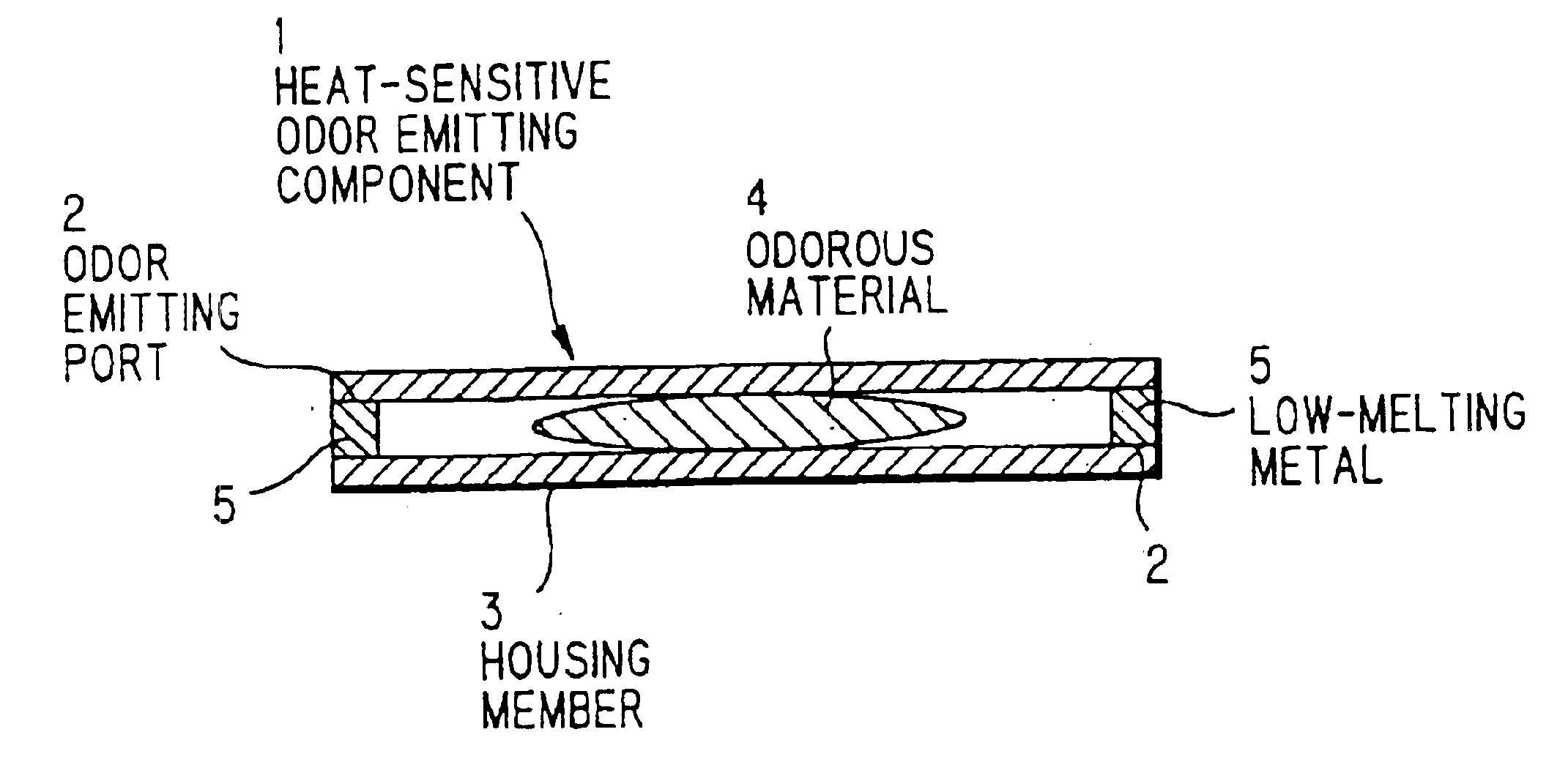Heat-sensitive odor-emitting component
a technology of odor-emitting components and heat-sensitive components, which is applied in the direction of heat measurement, fire alarms, instruments, etc., can solve the problems of high cost of thermal sensors, inability to accurately grasp overheating phenomena in equipment, and extreme increase in equipment temperature, etc., to achieve excellent long-term stability and high heat sensitivity
- Summary
- Abstract
- Description
- Claims
- Application Information
AI Technical Summary
Benefits of technology
Problems solved by technology
Method used
Image
Examples
example 1
Ethanol having a boiling point of 79° C. was provided as an odorous material 33 and was placed in a metallic container 32 shown in FIG. 10. An odor-emitting port 34 was sealed with a sealing material 35 composed of a bismuth-indium alloy (weight ratio=34:66) having a melting point of 72° C. to prepare an odor-emitting component 31.
Thereafter, the odor-emitting component 31 was gradually heated. As a result, when the temperature reached about 75° C., the sealing material 35 melted down to open the odor-emitting port 34 through which ethanol was leaked. This increased the output of an electric odor detection sensor.
example 2
An odor-emitting component 31 was prepared in the same manner as in Example 1, except that n-heptane having a boiling point of 98° C. was used as the odorous material 33 and an indium-tin-bismuth alloy (weight ratio=48.2:44.4:7.4) having a melting point of 96° C. was used as the sealing material 35.
Thereafter, the odor-emitting component 31 was gradually heated. As a result, when the temperature reached about 100° C., the sealing material 35 melted down to open the odor-emitting port 34 through which n-heptane was leaked. This increased the output of an electric odor detection sensor.
example 3
An odor-emitting component 31 was prepared in the same manner as in Example 1, except that toluene having a boiling point of 111° C. was used as the odorous material 33 and a tin-indium alloy (weight ratio=48:52) having a melting point of 117° C. was used as the sealing material 35.
Thereafter, the odor-emitting component 31 was gradually heated. As a result, when the temperature reached about 120° C., the sealing material 35 melted down to open the odor-emitting port 34 through which toluene was leaked. This increased the output of an electric odor detection sensor.
PUM
 Login to View More
Login to View More Abstract
Description
Claims
Application Information
 Login to View More
Login to View More - R&D
- Intellectual Property
- Life Sciences
- Materials
- Tech Scout
- Unparalleled Data Quality
- Higher Quality Content
- 60% Fewer Hallucinations
Browse by: Latest US Patents, China's latest patents, Technical Efficacy Thesaurus, Application Domain, Technology Topic, Popular Technical Reports.
© 2025 PatSnap. All rights reserved.Legal|Privacy policy|Modern Slavery Act Transparency Statement|Sitemap|About US| Contact US: help@patsnap.com



